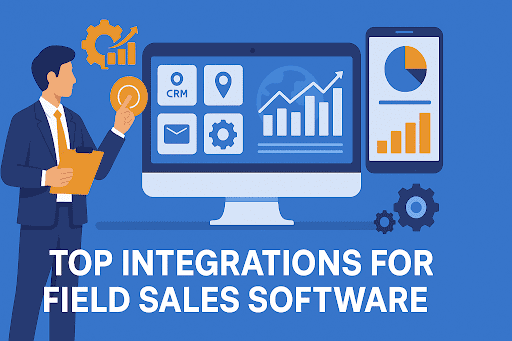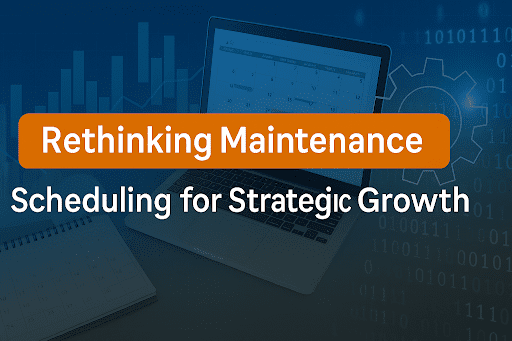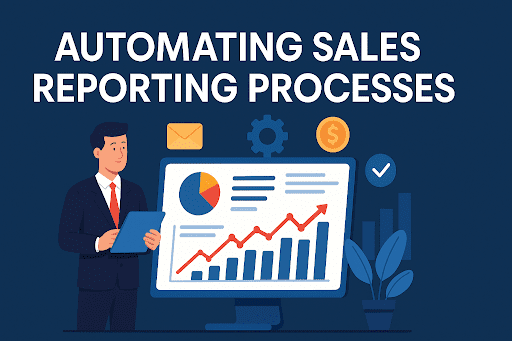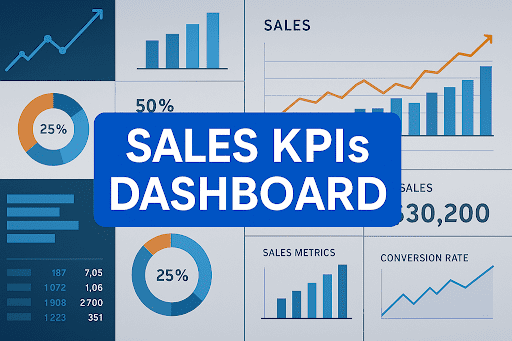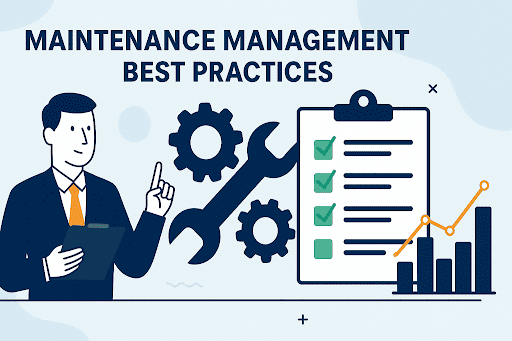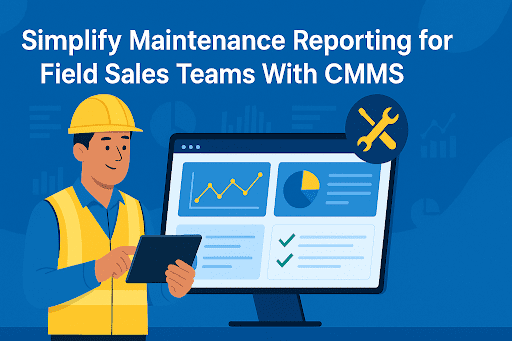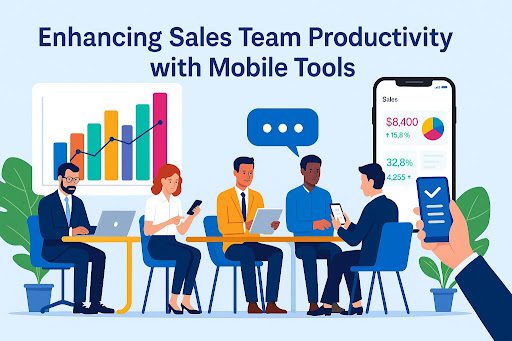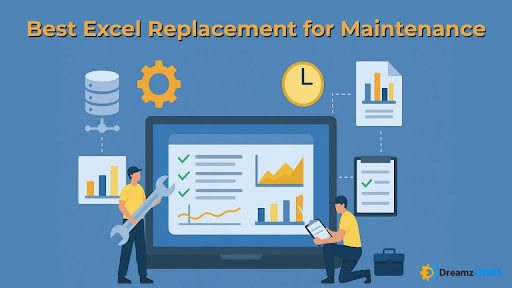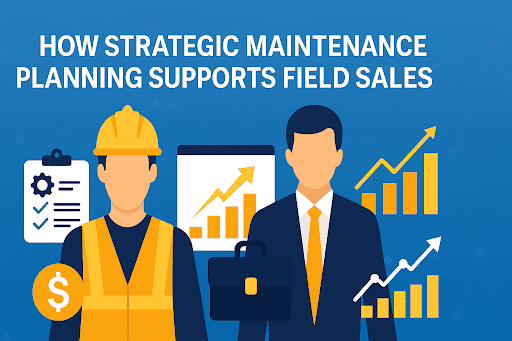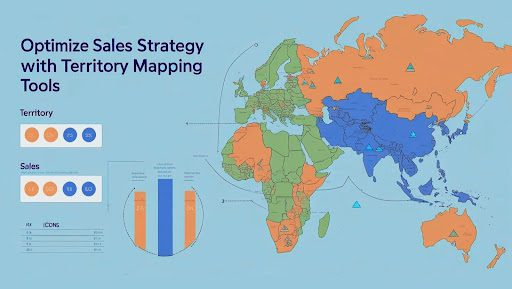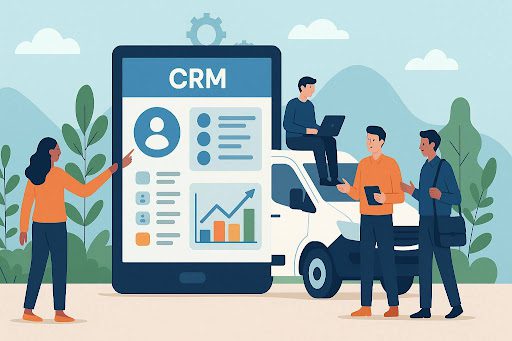 BACK TO Blog
BACK TO Blog
Asset Rental Management
Field Sales
Rethinking Territory Management as a Strategic Function For many organizations, territory management starts as a spreadsheet and ends as a compromise. It looks efficient on paper, but in practice, overlaps persist, resources are unevenly distributed, and market opportunities go under-served. Strategies for Effective Territory Management have evolved. What once was
- May 20, 2025
- DreamzCMMS Team
- 9 minutes read

- May 20, 2025
- DreamzCMMS Team
- 9 minutes read
Rethinking Territory Management as a Strategic Function
For many organizations, territory management starts as a spreadsheet and ends as a compromise. It looks efficient on paper, but in practice, overlaps persist, resources are unevenly distributed, and market opportunities go under-served.
Strategies for Effective Territory Management have evolved. What once was a manual, geography-based process is now a dynamic, data-driven discipline shaped by customer behavior, sales intelligence, and digital integration.
For leadership teams, the challenge is no longer just about carving out zones on a map. It is about building a smarter, faster, more responsive model one that aligns sales coverage planning with real-time market needs.
With tools like Territory Planning Software and Field Sales Software, businesses can now rethink their approach from the ground up. Assignments become more balanced. Travel is optimized. Team performance is measurable, not anecdotal.
This is not just operational efficiency. This is strategic enablement. In the sections ahead, we will explore how CRM-Based Territory Management, Mobile CRM for Field Teams, and smart realignment techniques can reduce cost, increase reach, and provide the visibility executives need to lead with confidence.
We will also show how platforms like DreamzCMMS and Field Service Management Software enable these capabilities at scale turning territory management into a competitive advantage.
Why Traditional Territory Planning Models No Longer Work
Territory management is often treated as a legacy process unchanged from one sales cycle to the next. A few ZIP codes shifted here, a new rep assigned there. But as customer expectations evolve and markets become more dynamic, old models reveal their flaws.
One of the most common issues is imbalance. High-potential regions are overloaded, while low-activity areas receive too much attention. Sales leaders attempt to fix this with minor tweaks, but without the support of Territory Assignment Strategies, the results are short-lived.
Territories built solely on geography often fail to account for more relevant variables: customer density, revenue potential, account complexity, and rep specialization. The result? Missed opportunities, internal inefficiencies, and frustrated teams.
Another challenge is visibility. Without integrated systems, it becomes difficult for managers to track real performance across different areas. How do you know if one rep’s success is based on effort or just favorable territory design?
This is where modern tools make a difference. With Sales Territory Optimization and Performance Tracking by Territory, companies begin to see not just who is succeeding but why.
When supported by Asset Maintenance Management Software and digital platforms like DreamzCMMS, territory strategies move from theory to measurable impact. Leaders gain a full view of assignments, productivity, and performance in context.
Modern territory management is no longer about drawing lines on a map. It is about making smarter, data-backed decisions that support long-term growth and operational clarity.
Tools and Techniques That Power Modern Territory Strategies
Effective territory management is no longer just about dividing regions it is about aligning people, priorities, and performance with precision. The right strategies are supported by the right systems. When leadership embraces this approach, the results extend beyond sales; it touches service, forecasting, and long-term planning.
1. CRM-Based Territory Management
At the heart of successful modern models is integration. CRM-Based Territory Management enables real-time updates, dynamic assignments, and clear visibility across teams. Managers can see how opportunities progress within specific zones and adjust plans as markets evolve.
CRM integration also supports better collaboration between field reps, service technicians, and operations especially when paired with platforms like Field Service Management Software.
2. Mobile CRM for Field Teams
Today’s field teams need more than maps; they need mobility. Mobile CRM for Field Teams ensures sales professionals have access to contact history, visit schedules, and opportunity insights on the move. This reduces communication delays and improves responsiveness at every customer touchpoint.
Mobile tools also support Sales Route Planning Tools, helping reduce travel time while increasing call frequency and coverage quality.
3. Realigning with Strategic Purpose
Territory boundaries should not be permanent. High-performing teams conduct regular reviews and make adjustments based on performance metrics, growth potential, and feedback from the field.
Territory Realignment Best Practices include involving frontline teams, using data to guide decisions, and aligning changes with overall business goals. When territory updates are tied to real strategy rather than guesswork adoption improves, resistance drops, and field execution sharpens.
With tools like DreamzCMMS, managers gain access to deeper analytics that connect field activity, asset status, and service coverage, providing a broader context for decision-making.
Ready to Modernize Your Territory Strategy?Outdated territory planning slows teams down and wastes high-value opportunities. DreamzCMMS helps organizations streamline assignments, track performance, and align field operations with strategic goals using real-time data, mobile tools, and integrated workflows. Request a Free Demo today to see how smarter territory management can unlock efficiency and impact across your entire sales and service network. |
Territory Strategy Is Never Static—Here Is How Smart Teams Keep Improving
Even the most well-designed territory plan can drift off course over time. Markets shift. Team dynamics change. New competitors emerge. What worked last year may no longer be enough.
That is why the best-performing organizations treat territory planning as a continuous process not a one-time map exercise.
1. Look Beyond the Numbers—Look at the Patterns
Success in one territory and underperformance in another may not always be about the people. Often, it comes down to how territories are defined and what expectations are tied to them.
Using Performance Tracking by Territory, leaders can see which areas are delivering consistent results and which ones may need support or redesign. This is not just about counting wins. It is about understanding context: customer mix, travel time, call volume, and asset availability all matter.
Modern Field Sales Software helps make these patterns visible linking performance data to real territory layouts and rep assignments.
2. Use Maps as More Than a Visual Tool
A map is no longer just a reference. With Geographic Sales Mapping, companies can spot opportunity clusters, high-potential zones, and under-covered areas at a glance.
This insight matters when making decisions about expansion or realignment. It helps leaders act before problems appear on the revenue report.
Teams using tools like DreamzCMMS or Asset Maintenance Management Software also benefit from seeing how asset distribution or service zones affect team performance. Territory planning is stronger when supported by operational context, not just sales goals.
3. Leadership Must Guide the Rhythm
Territory reviews should not happen only when there is a problem. They should be a part of the business rhythm reviewed quarterly or semi-annually, just like any strategic plan.
Executives do not need to manage every detail. But they do need to ask the right questions:
- Are we set up to reach the right customers, in the right way, at the right time?
- Are our strongest people focused where they have the most impact?
Territory strategy, done right, is not just about structure. It is about positioning your teams for performance with clarity, fairness, and strategic intent.
Strategic Insight: Territory Planning as a Cross-Functional Advantage
Territory management is often framed as a sales operations task. But when viewed through a wider lens, it becomes clear that territory design touches nearly every aspect of the business.
1. Operations and Logistics
Well-defined territories reduce confusion around resource allocation, delivery coordination, and field service response. With tools like DreamzCMMS, operations leaders can view maintenance zones, service routes, and sales boundaries in one unified environment. This ensures technicians, assets, and reps are deployed in sync not in conflict.
2. Customer Experience
Poor territory design often results in overlapping outreach or inconsistent service levels. This frustrates customers and erodes trust. Using Performance Tracking by Territory, businesses can assess which zones deliver timely service and which require better support alignment.
When Facility Management Software is integrated, teams gain insight into service loads by region leading to smarter staffing and better customer outcomes.
3. Strategic Resource Planning
As sales strategies scale, so do their risks. Without Geographic Sales Mapping, companies may overinvest in saturated markets or ignore underserved ones.
Regularly updated territory insights support smarter hiring, marketing, and infrastructure decisions grounded in performance, not assumptions.
Leading with Clarity—Turning Territory Strategy into Business Impact
Territory management is no longer a background process, it is a leadership lever.
The way territories are defined, assigned, and adjusted shapes how effectively teams perform in the field. It influences revenue potential, operational efficiency, and the experience delivered to every customer.
The strategies that work today are not static. They are data-driven, adaptive, and integrated with the tools your teams already use from CRM-Based Territory Management to Field Sales Software, and broader operational platforms like DreamzCMMS.
Executives who treat territory planning as a living strategy gain more than coverage. They build fairness into their teams. They reduce waste in travel and time. They uncover untapped market potential, guided by real-world performance not legacy maps.
When systems like Facility Management Software, Construction Project Management Software, and Asset Maintenance Management Software are tied into your territory logic, the business becomes sharper. Not only are teams working smarter but leadership is making decisions with a full view of context, risk, and opportunity.
Success does not come from drawing better lines. It comes from aligning people, data, and decisions in a way that serves the customer and the business better.
Recommended ReadsContinue exploring how technology, strategy, and field operations come together to drive sales performance and operational clarity:
|
Drive Smarter Territory Management with DreamzCMMSTerritory performance is not about coverage alone it is about clarity, strategy, and execution. Request a Free Demo and see how DreamzCMMS brings together sales, service, and operational data to help you define, manage, and improve territories with confidence. |
Ready for More?
Talk to one of our CMMS experts and see how DreamzCMMS can simplify your maintenance operations.
Book a free consultation

